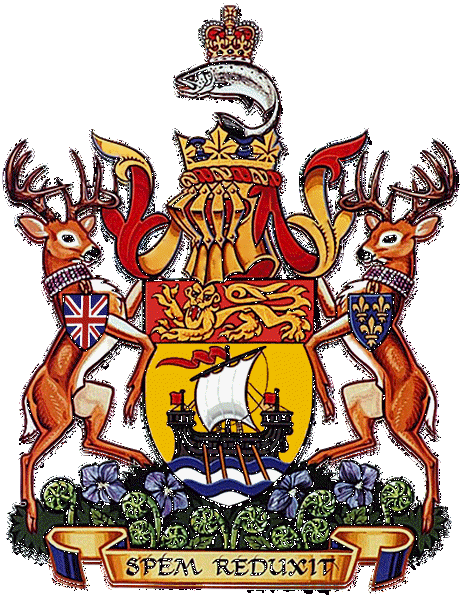AHGP Canada
Canadian
Genealogy

New Brunswick

New Brunswick, one of the four
original provinces of Canada, entered the Canadian Confederation on
July 1, 1867. The Charlottetown Conference of 1864, which ultimately
led to the confederation movement, originally had been intended to
discuss only a Maritime Union, but concerns over the American Civil
War as well as Fenian activity along the border led to an interest
in expanding the scope of the proposed union. This interest in an
expanded union arose from the Province of Canada (formerly Upper and
Lower Canada, later Ontario and Quebec), and a request was made by
the Canadian political leaders to the organizers of the Maritime
conference to have the meeting agenda altered.
Although the Maritime leaders
were swayed by the arguments of the Canadians, many ordinary
residents of the Maritimes wanted no part of this larger
confederation for fear that their interests and concerns would be
ignored in a wider national union. Many politicians who supported
confederation, such as Sir Samuel Leonard Tilley (New Brunswick's
best-known Father of Confederation), found themselves without a seat
after the next election; nevertheless, backers of the wider
confederation eventually prevailed.
Following confederation, the
fears of the anti-confederates were proven correct as new national
policies and trade barriers were soon adopted by the central
government, thus disrupting the historic trading relationship
between the Maritime Provinces and New England. The situation in New
Brunswick was exacerbated by both the Great Fire of 1877 in Saint
John and the decline of the wooden shipbuilding industry; skilled
workers were thus forced to move to other parts of Canada or to the
United States to seek employment.
As the 20th century dawned,
however, the province's economy again began to expand. Manufacturing
gained strength with the construction of textile mills; and in the
crucial forestry sector, the sawmills that had dotted inland
sections of the province gave way to larger pulp and paper mills.
The railway industry, meanwhile, provided for growth and prosperity
in the Moncton region. Nevertheless, unemployment remained high
throughout the province, and the Great Depression brought another
setback. Two influential families, the Irvings and the McCains,
emerged from the Depression to begin to modernise and vertically
integrate the provincial economy—especially in the vital forestry,
food processing, and energy sectors.
The Acadians in northern New
Brunswick had long been geographically and linguistically isolated
from the more numerous English speakers, who lived in the south of
the province. Government services were often not available in
French, and the infrastructure in predominantly Francophone areas
was noticeably less developed than in the rest of the province; this
changed with the election of Premier Louis Robichaud in 1960. He
embarked on the ambitious Equal Opportunity Plan, in which
education, rural road maintenance, and health care fell under the
sole jurisdiction of a provincial government that insisted on equal
coverage throughout the province. County councils were abolished,
and the rural areas came under direct provincial jurisdiction. The
1969 Official Languages Act made French an official language.
| Bathurst |
Campbellton |
Dieppe |
| Edmundston |
Fredericton |
Miramichi |
| Moncton |
|
Saint John |
New
Brunswick Tourism
New Brunswick
Genealogical Society
Indian Tribes
The Great Fire of 1877
Birth, Marriage, Deaths
Census - 1901
Passenger Lists
Irish Portal
Mailing List
The Old Burial Ground - St. John
The Old Burial Ground - Fredericton
Commonwealth War
Graves Commission
Index

©Copyright 2005 - Present
All Rights Reserved
|
|
|